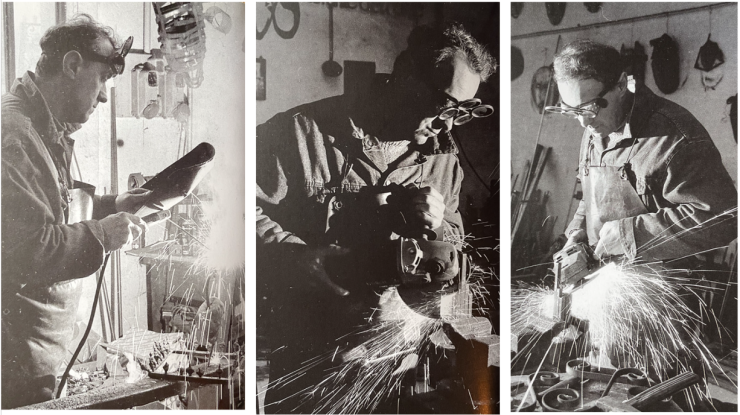
The interview with the artist Giovanni Tamburelli was essential in establishing the methodological choices for the restoration intervention on Pappagallo and Ranocchia, two artifacts where degradation is a fundamental component of the execution technique. The oxidation products present on the surface are integral to the aesthetic qualities of the works, which is why it was important to understand how the artist's intention, thought process, and narrative influence the value attributed to the degradation of the constituent materials. The formation of oxidation products, which alters the optical qualities of the surfaces, can be a cause of deterioration for artworks and poses a risk to the future preservation of the sculptures.
The analysis of the meeting allowed for determining how degradation - caused by corrosion - is part of the artist's sculptural research and whether the value attributed to oxidation products is related to the passage of time or the aesthetic characteristics of the artworks. Corrosion creates particular optical effects that serve as the artist's tool for the aesthetic qualification of the sculptures. Once the works are finished, Tamburelli wishes to halt the effects of this process, thereby preserving the material changes that occur over time. The meeting with the artist provided precise information on the execution technique, materials used, and Tamburelli's interest in corrosion. The data collected and documented were essential for understanding and defining the values attributed to the oxides present on the sculptures.
The meeting took place on October 31, 2020, at Giovanni Tamburelli's studio in Saluggia. Such a space allowed for getting closer to the materials, the products used, and the tools employed in the execution process. At the time of the interview, the artworks had already been transferred to the restoration laboratory. For this reason, photographs of the artifacts were brought to the meeting to facilitate discussion on sensory impressions and to converse about the material and aesthetic values inherent in the sculptures.